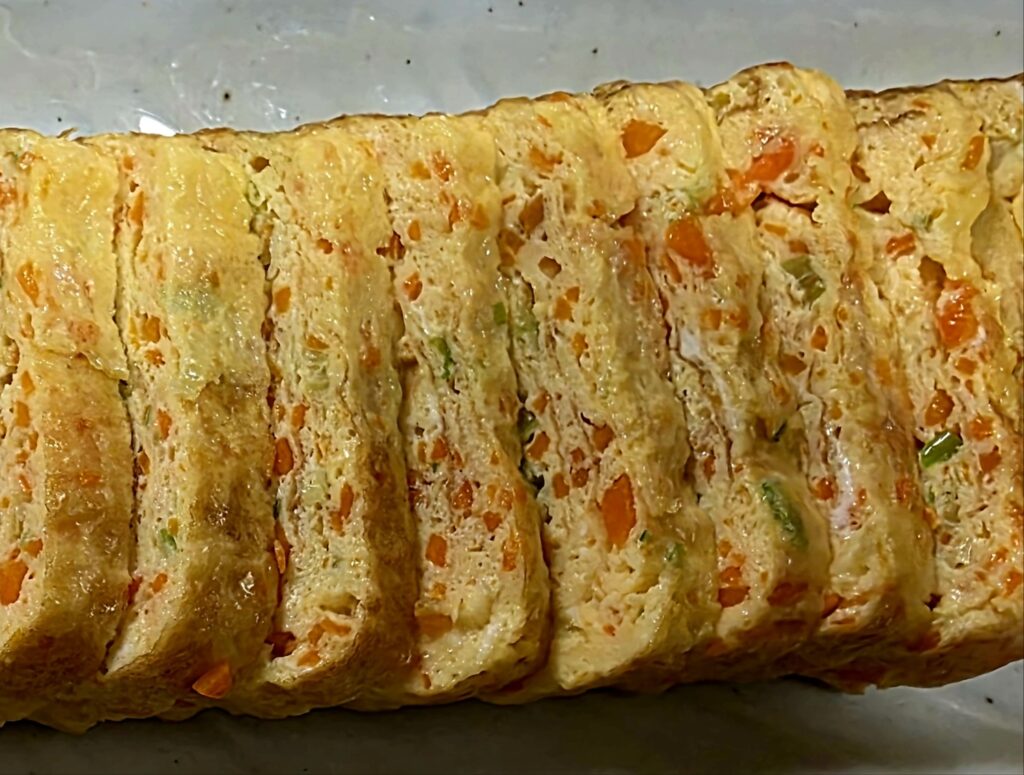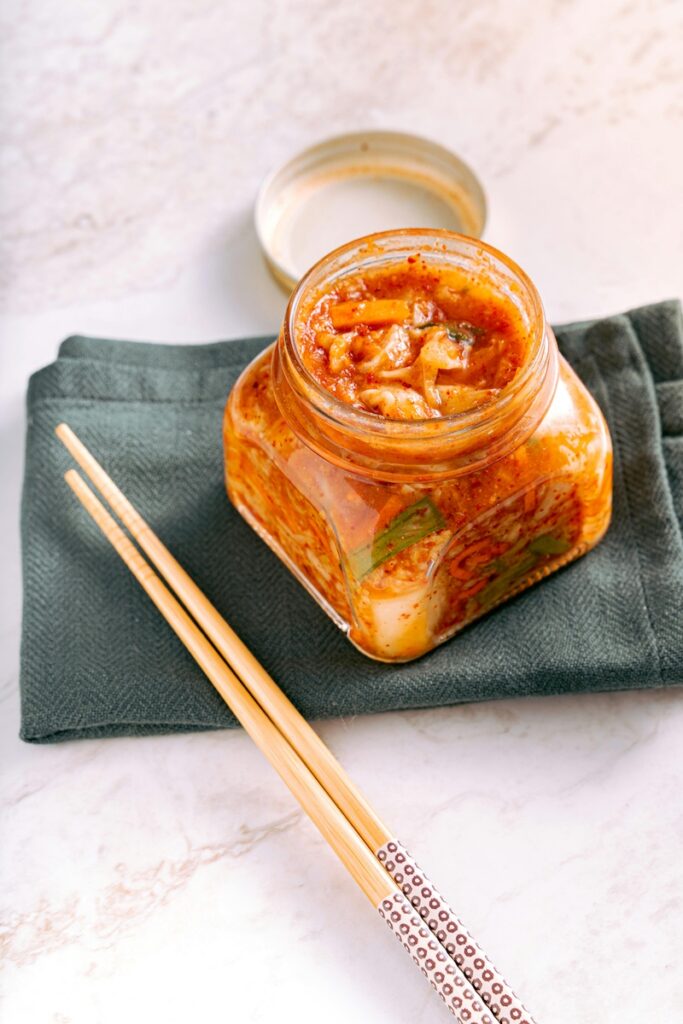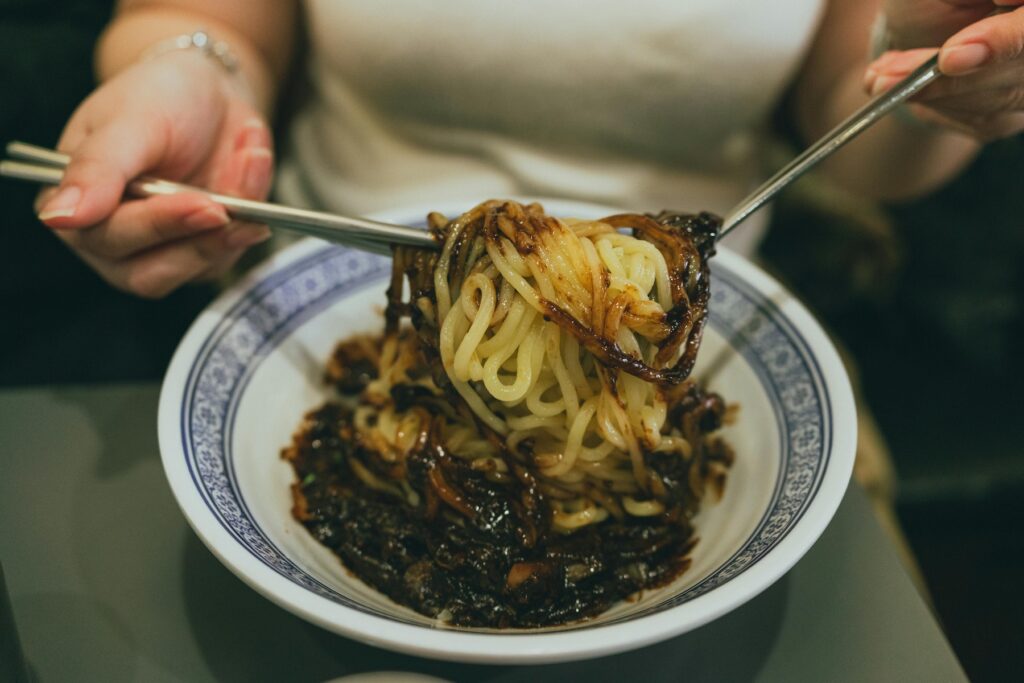🥚 Introduction: The Korean Culinary Marvel That Reimagines the Humble Egg
The egg. It’s the ultimate universal food. Found in nearly every culture, it is revered for its superior nutrition, incredible versatility, and deeply comforting flavor. From the simplest scramble to the most delicate quiche, the egg is a staple that bridges linguistic and geographic divides. For visitors to Korea, this common ground often leads to a delightful discovery: Gyeran-mari (계란말이), the Korean rolled omelette.
While familiar at its core—it’s an egg dish, after all—Gyeran-mari presents a fascinating new texture and preparation method. It’s familiar, yet wonderfully exotic. It’s the kind of dish that makes you feel immediately at home while simultaneously igniting your culinary curiosity. The process of taking simple, beloved ingredients and transforming them through a unique rolling technique results in something that is much greater than the sum of its parts.
This humble dish is a cornerstone of Korean home cooking, embodying the philosophy that even the most basic components can become elegant and satisfying when prepared with care. If you are looking for an accessible entry point into the world of K-Food, or simply a new way to enjoy the world’s favorite protein, Gyeran-mari is your perfect starting point.

🇰🇷 Section 1: More Than Just an Omelette: The Cultural Significance of Gyeran-mari
The name Gyeran-mari is beautifully straightforward: Gyeran (계란 or 달걀) means ‘egg’ and mari (말이) means ‘roll’ or ‘rolled up.’ Yet, in Korean culture, its role is anything but simple.
The Heart of Banchan (Side Dishes)
In Korea, meals are communal and built around bap (rice) and a variety of banchan (side dishes). Gyeran-mari is arguably one of the most beloved banchan. Its mild, slightly savory flavor and soft, layered texture make it a perfect complement to spicier, more pungent dishes like kimchi jjigae (stew) or fiery stir-fries. It acts as a delicious, protein-packed palate cleanser. No family table is complete without a colorful stack of these sliced egg rolls.
A Symbol of Home and Love (Dosirak)
For many Koreans, Gyeran-mari evokes powerful childhood nostalgia. It is the quintessential item packed into a dosirak (lunch box) by a caring mother or grandmother. Because it holds its shape well and tastes excellent even at room temperature, it is the perfect component for school lunches, picnics, and family road trips. Finding a piece of bright yellow, perfectly rolled Gyeran-mari nestled amongst the rice and kimchi in a lunchbox is a tangible symbol of family love and care. This deep emotional connection elevates it beyond mere food; it is a cultural touchstone.
A Quick, Nutritious Fix
From a practical standpoint, Gyeran-mari is a hero in the Korean kitchen. Eggs are a budget-friendly source of high-quality protein, essential vitamins (like D and B12), and healthy fats. Since it takes just minutes to prepare—especially for a seasoned cook—it is the ideal “last-minute” banchan to whip up when guests arrive unexpectedly or when a meal needs an extra pop of color and substance. It’s a fast, delicious way to ensure a well-balanced, high-protein meal.
🍽️ Section 2: A Dish of Layers and History: Gyeran-mari vs. The Western Omelette
While the Western omelette and the Korean Gyeran-mari share the common ingredient of egg, their preparation, texture, and cultural function are distinctly different, highlighting Korea’s unique culinary approach.
The Art of the Roll: Technique and Texture
The key difference lies in the cooking technique.
| Feature | Gyeran-mari (Korean Rolled Omelette) | Western Omelette (French/Classic) |
| Preparation | Layered Rolling Technique: Thin layers of egg are poured into the pan and rolled upon themselves repeatedly. | Single Fold Technique: The whole mixture is cooked in one go, then folded over (usually in thirds or half). |
| Texture | Dense, Fluffy, and Layered: The process creates dozens of soft, tight layers that melt in the mouth. | Smooth, Silky, and Custardy: The interior is often slightly soft or “baveuse.” |
| Heat | Very Low Heat: Cooked slowly to prevent browning and keep the egg moist. | Medium to High Heat: Cooked quickly to achieve a smooth exterior and set interior. |
| Fillings | Finely diced vegetables (scallion, carrot) mixed into the egg mixture. | Fillings (cheese, herbs) added on top before folding. |
The painstaking, slow-rolling process of Gyeran-mari is what gives it its characteristic cross-section: a beautifully uniform spiral of yellow egg and colorful vegetables. This technique is similar to its Japanese cousin, Tamagoyaki, but Gyeran-mari is typically savory, seasoned simply with salt and sometimes a touch of fish sauce or dasida (beef seasoning), and often includes more rustic, visible chunks of vegetables.
Historical Context
Though the exact origin is difficult to pinpoint, rolled egg dishes have been a part of East Asian cuisine for centuries. In Korea, the ability to make a beautiful, thick, and perfectly cylindrical Gyeran-mari has long been a subtle marker of a good cook and a well-maintained home kitchen. It’s a dish that relies not on expensive ingredients, but on patience and precision, traits deeply valued in traditional Korean cooking.
🧑🍳 Section 3: Master the Roll: A Step-by-Step Guide to Making Perfect Gyeran-mari at Home
You don’t need a specialty Korean Tamagoyaki pan—though a small, non-stick rectangular pan certainly helps—a standard 8-inch or 10-inch non-stick skillet works perfectly. The secret is patience and low heat.
Essential Ingredients (Basic Scallion & Carrot Roll)
- 5 Large Eggs
- 1 Tablespoon finely chopped Scallion (Green Onion)
- 1 Tablespoon finely chopped Carrot
- 1/4 teaspoon Salt (or to taste)
- 1 teaspoon Water or Milk (optional, for softer texture)
- Neutral Cooking Oil (Canola, Vegetable, or Avocado)
- Optional: A pinch of sugar to enhance flavor.
Step-by-Step Instructions: The Rolling Technique
- Prep the Mix: Crack the eggs into a large bowl. Add salt, water/milk (if using), and the finely chopped carrots and scallions. Whisk thoroughly until the yolks and whites are fully incorporated, but avoid over-whisking, which can introduce too much air. Chop vegetables very finely; larger pieces make rolling difficult.
- Heat the Pan (The Key Step): Heat your non-stick pan over medium-low heat. This heat level is crucial. If the heat is too high, the egg will set too quickly, brown, and tear when you try to roll it. Lightly oil the pan, using a paper towel to wipe off any excess, leaving only a thin, even coat of oil.
- Pour the First Layer: Pour about one-third of the egg mixture into the pan, swirling to cover the bottom evenly. Let it cook until the bottom is set, but the top is still slightly wet.
- Start the Roll: Using a flexible spatula or chopsticks, gently fold the egg mixture about one inch in from the edge. Continue rolling the egg, tucking it tightly as you go, until you have a small log rolled to one side of the pan. Leave a small, unrolled “tail” flap.
- Add the Second Layer: Push the rolled egg log back to the side of the pan. Re-oil the empty space, making sure to also lightly oil under the rolled log and the edge of the pan. Pour another third of the egg mixture into the empty space, ensuring the raw egg mixture runs underneath the existing egg roll’s “tail” flap. This is essential for binding the new layer.
- Repeat and Finish: Once the new layer is set but still slightly wet, continue the rolling process, using the existing roll as your starting point. Repeat step 5 with the final portion of the egg mixture.
- Shape and Slice: Once the final log is rolled, let it sit in the warm pan for an extra minute to fully set the layers. Transfer the roll to a cutting board, let it cool for 1-2 minutes, then slice it into one-inch-thick pieces.
🧀 Section 4: Endless Variations: Customize Your Korean Rolled Omelette
The simple egg mixture acts as a blank canvas, making Gyeran-mari endlessly customizable to fit your preferences or what you have available in your kitchen.
Flavor Profiles and Fillings
| Variation Category | Popular Ingredients | Description |
| Vegetable Power | Onion, bell pepper, mushrooms, zucchini, garlic chives (buchu) | Finely dicing is essential. These add moisture and earthy flavors. |
| Protein Boost | Ham, bacon, imitation crab meat (geh-sal), canned tuna | Excellent for lunchboxes. Dice and mix them directly into the egg batter. |
| Dairy Delight | Shredded mozzarella, cheddar, or string cheese | Add a layer of cheese before rolling the egg to create a gooey, melting center. Cheese Gyeran-mari is hugely popular. |
| Korean Twist (Advanced) | Dried seaweed (gim), salted pollack roe (myeongran), perilla leaves (kkaennip) | For a distinctive taste. Place a thin sheet of gim on the egg layer before rolling, or mix salted roe for a savory, umami-rich flavor. |
A Fun, Modern Twist: Rainbow Gyeran-mari
For a visually stunning dish, try splitting the egg mixture into two bowls. Leave one plain, and mix a small amount of finely chopped spinach or chives into the other. Alternate the plain and colored egg mixtures with each roll, creating vibrant, beautiful layers that are guaranteed to impress.
🥢 Section 5: The Perfect Pairing: How to Enjoy Gyeran-mari
The way you serve Gyeran-mari often depends on the context of the meal.
Serving Style and Temperature
- As Banchan: Served in bite-sized slices on a communal plate, typically at room temperature or slightly warm.
- In Lunch Boxes: Sliced and packed tightly next to rice and other banchan.
- Anju (Drinking Food): In Korean bars or pochas, it’s often served hot, sometimes in a giant, thick log, frequently accompanied by dipping sauces.
Sauces and Condiments
The most common pairing, particularly for those new to the dish, is the simple yet satisfying duo of Ketchup. The sweetness and tanginess of the tomato sauce provide a pleasant contrast to the savory egg.
For a more authentically Korean experience, you can serve it with a Soy Sauce Dipping Mixture:
Ingredients: 1 Tbsp Soy Sauce, 1/2 tsp Sesame Oil, a pinch of Toasted Sesame Seeds, and a tiny dash of white vinegar or finely chopped scallions.
This dipping sauce provides a delicate, nutty, and savory layer of flavor that complements the egg without overpowering it.
📍 Section 6: Where to Find Gyeran-mari When Traveling in Korea
While the best Gyeran-mari is arguably found in a Korean home, you can certainly enjoy this fantastic dish when dining out.
- Local Restaurants (Bunsikjip & Kimbap Heaven): Almost any casual Korean eatery that serves kimbap (seaweed rolls) and other quick meals (bunsik) will have Gyeran-mari on the menu, usually served as a reliable, inexpensive side.
- Korean Pubs (Pocha & Izakaya): One of the most popular settings for enjoying this dish is in a pocha (Korean tent bar) or a Korean-style izakaya. Here, the Gyeran-mari often comes out as an impressively large, thick log—a satisfying and often extravagant Anju (food eaten with alcohol). It’s a warm, filling counterpoint to cold soju or makgeolli.
- Specialty Restaurants: High-end Korean BBQ restaurants sometimes offer a small, elegant portion as part of their complimentary banchan spread, showcasing the care and quality of their food.
The widespread availability of Gyeran-mari in Korea speaks volumes about its place in the national culinary heart. It’s an easy, friendly, and reliable food companion in virtually any dining situation.
🌟 Conclusion: From Simple Ingredients to Comforting Delight: Your Next Kitchen Staple
Gyeran-mari is a testament to the fact that culinary genius often lies in technique rather than complexity. It takes the most familiar food item—the egg—and presents it in a fresh, inviting, and beautifully layered form.
If you are a foreigner with a basic understanding and appreciation for eggs, you are already halfway to loving Gyeran-mari. Its universal appeal, nutritional value, and the warmth of the home cooking tradition it embodies make it an absolute must-try. You can easily make it at home, or you can find it readily available in restaurants and pubs throughout Korea.
We encourage you to roll up your sleeves and try the recipe, or simply seek it out on your next visit to a Korean eatery. Discover the familiar pleasure and unique delight of this iconic Korean side dish.
Start rolling your way to a perfect plate of Gyeran-mari today—you won’t regret adding this comforting staple to your kitchen repertoire!

